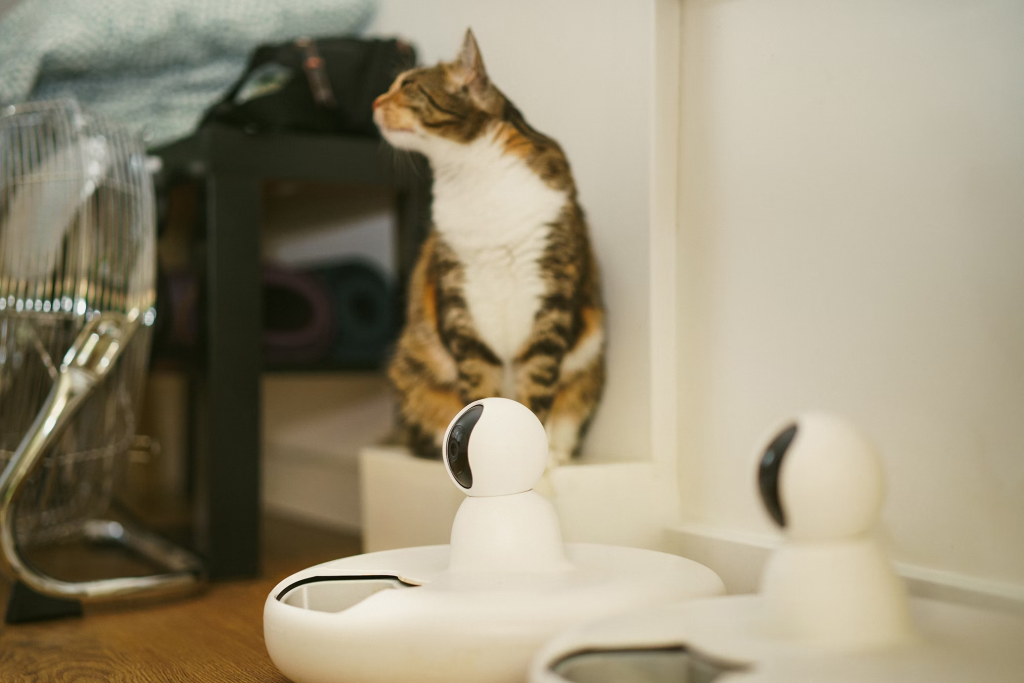Introduction
As climate change and environmental sustainability become increasingly important, more homeowners are turning to smart home technology to make their living spaces eco-friendly. By integrating energy-efficient devices and adopting sustainable practices, you can significantly reduce your carbon footprint and create a home that is better for the planet. In this smart home guide to make your home eco-friendly, we’ll explore how smart technology can optimize energy use, conserve resources, and transform your home into a green haven.

1. Start with Smart Lighting: Bright Ideas for an Eco-Friendly Home
Lighting is one of the easiest places to start when making your home more eco-friendly. Traditional incandescent bulbs consume more energy and have a shorter lifespan compared to modern LED and smart lighting options. By switching to smart lighting, you can control energy usage and reduce electricity costs.
a. Upgrade to Smart LED Bulbs
Smart LED bulbs, such as those from Philips Hue or LIFX, consume up to 75% less energy than traditional bulbs and can last up to 25 times longer. These bulbs can be controlled remotely using a smartphone app or voice commands, allowing you to turn off lights when they’re not in use, dim them to save energy, or set them on a timer.
Why It’s Eco-Friendly: LED bulbs use less energy and produce less heat, reducing your overall energy consumption and minimizing environmental impact.
b. Implement Motion Sensors
Adding motion sensors to your home can prevent lights from being left on in unoccupied rooms. Smart motion sensors automatically turn lights on and off based on movement, making them ideal for areas like hallways, bathrooms, and closets.
Pro Tip: Consider pairing motion sensors with smart light switches for even more control and convenience.
c. Use Smart Plugs for Lamps and Appliances
Smart plugs, such as the TP-Link Kasa Smart Plug, allow you to control power to any connected device through an app. This makes it easy to ensure that energy-draining devices are turned off when not in use, reducing phantom power consumption.
Key Feature: Some smart plugs come with energy monitoring capabilities, giving you real-time data on power usage and helping you identify where you can save energy.
2. Optimize Heating and Cooling: Smart Thermostats for Energy Efficiency
Heating and cooling are among the biggest contributors to household energy consumption. By installing a smart thermostat, you can optimize your home’s temperature settings for comfort and efficiency.
a. Install a Smart Thermostat
Smart thermostats like the Nest Learning Thermostat or ecobee SmartThermostat adapt to your routine and learn your preferences over time. They automatically adjust the temperature based on whether you’re home or away, ensuring energy isn’t wasted heating or cooling an empty house.
Why It’s Eco-Friendly: Smart thermostats can reduce heating and cooling costs by up to 15%, making them a must-have for any eco-conscious home.
b. Set Temperature Zones
If you have a larger home, consider creating temperature zones with smart thermostats and sensors in different rooms. This allows you to heat or cool only the rooms you’re using, reducing unnecessary energy consumption.
Pro Tip: Pair your smart thermostat with smart window shades, which can automatically close during hot days to keep your home cooler and reduce the need for air conditioning.
3. Conserve Water: Smart Irrigation and Water-Saving Solutions
Water is a precious resource, and smart technology can help you reduce water usage both inside and outside your home. From intelligent irrigation systems to smart leak detectors, here’s how to make your home more water-efficient.
a. Smart Irrigation Systems
Overwatering your lawn or garden can waste a significant amount of water. Smart irrigation systems like the Rachio 3 Smart Sprinkler Controller use weather data and soil moisture levels to adjust watering schedules automatically, ensuring your plants get the right amount of water without waste.
Why It’s Eco-Friendly: Smart irrigation controllers can reduce water usage by up to 50%, making them a smart investment for water conservation.
b. Install Low-Flow Smart Faucets and Showerheads
Low-flow fixtures are designed to reduce water consumption without compromising water pressure. Smart versions of these devices, such as the U by Moen Smart Shower, allow you to control water temperature and flow with voice commands, ensuring a perfect shower while minimizing water usage.
Pro Tip: Use smart leak detectors like the Flo by Moen to monitor for leaks and prevent water waste before it becomes a major issue.
4. Generate and Store Your Own Energy: Solar Panels and Smart Batteries
Generating your own renewable energy is a great way to make your home eco-friendly. Pairing solar panels with smart batteries can help you reduce dependence on the grid and even save excess energy for later use.
a. Install Solar Panels
Solar panels are a long-term investment that allows you to harness the power of the sun to generate clean energy. Modern solar panels are more efficient than ever, and many homeowners are using them to power their entire household. Look for panels with high efficiency ratings and low environmental impact.
Why It’s Eco-Friendly: Solar panels produce zero emissions and can significantly reduce your home’s carbon footprint.
b. Use Smart Battery Storage Systems
Batteries like the Tesla Powerwall or LG Chem RESU store excess energy generated by your solar panels for use during cloudy days or power outages. By storing your own energy, you can further reduce reliance on non-renewable sources.
Pro Tip: Combine solar panels and batteries with a smart home energy management system to monitor energy production and consumption in real-time.
5. Manage Household Appliances with Smart Technology
Appliances are another area where smart technology can make a big difference in energy usage. Smart appliances not only offer remote control and automation features but are also designed to operate more efficiently than traditional models.
a. Smart Refrigerators and Ovens
Refrigerators from brands like Samsung and LG can monitor their own energy usage, alert you when a door is left open, and even suggest recipes based on the food you have. Smart ovens can preheat automatically and adjust cooking times for more energy-efficient meal preparation.
Why It’s Eco-Friendly: Smart appliances optimize their operations, reducing energy consumption and helping you maintain an energy-efficient kitchen.
b. Energy-Efficient Smart Washers and Dryers
Smart washers and dryers use advanced sensors to determine the optimal amount of water and energy for each load. Models like the Whirlpool Smart Washer allow you to schedule laundry cycles during off-peak hours, reducing energy use and saving resources.
Pro Tip: Set up your smart washer and dryer to send notifications when a load is done, so you never leave appliances running longer than necessary.
6. Embrace Home Automation for a Seamless Eco-Friendly Experience
Home automation systems can tie all your smart devices together, allowing you to create custom routines that save energy and reduce your environmental impact.
a. Create Energy-Saving Routines
Use automation platforms like Google Home or Apple HomeKit to create routines that turn off lights, adjust thermostats, and power down non-essential devices when you leave home. This ensures that you’re not wasting energy while you’re away.
Example Routine: A “Goodbye” routine can turn off all lights, lower the thermostat, and activate security cameras with a single voice command.
b. Monitor and Track Your Eco-Friendly Impact
Many smart home devices, like the Sense Home Energy Monitor, provide real-time data on energy usage. Use this data to identify energy hogs and make informed decisions about where to make adjustments.
Why It’s Important: Monitoring helps you stay aware of your energy consumption and provides insights that can lead to long-term savings and sustainability.
Conclusion: Make Your Home Eco-Friendly with Smart Technology
Creating an eco-friendly home is more achievable than ever, thanks to advancements in smart home technology. From smart lighting and thermostats to water-saving irrigation systems and renewable energy solutions, there are countless ways to reduce your environmental impact while enhancing comfort and convenience. By following this smart home guide to make your home eco-friendly, you can create a sustainable living space that benefits both your household and the planet.
References
Consumer Reports. (2023). Top Smart Appliances for 2024. Available at: Consumer Reports
Smart Home World. (2023). Guide to Energy-Efficient Smart Home Devices. Available at: Smart Home World
U.S. Department of Energy. (2023). Home Energy Efficiency and Renewable Energy. Available at: Energy.gov









